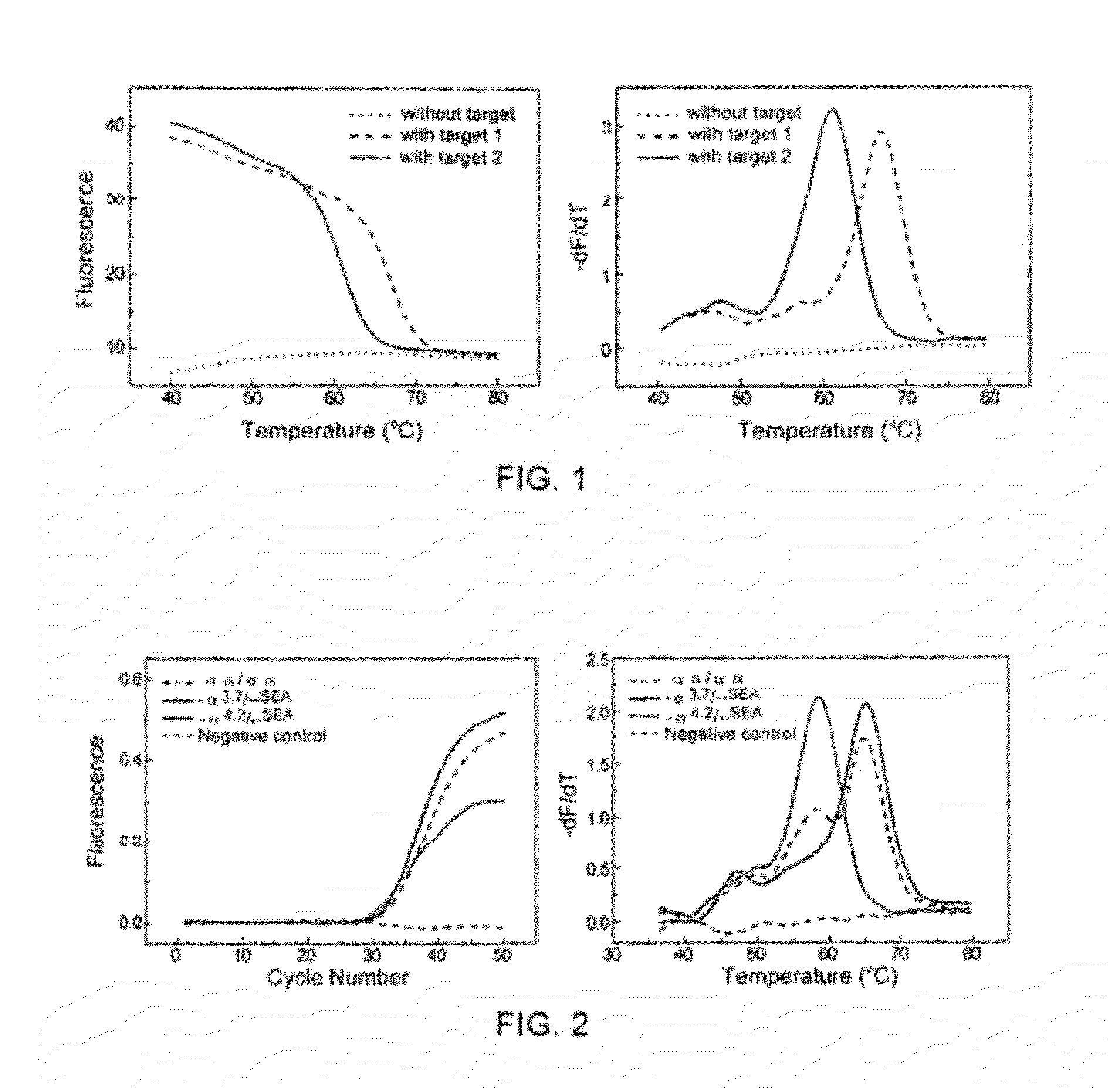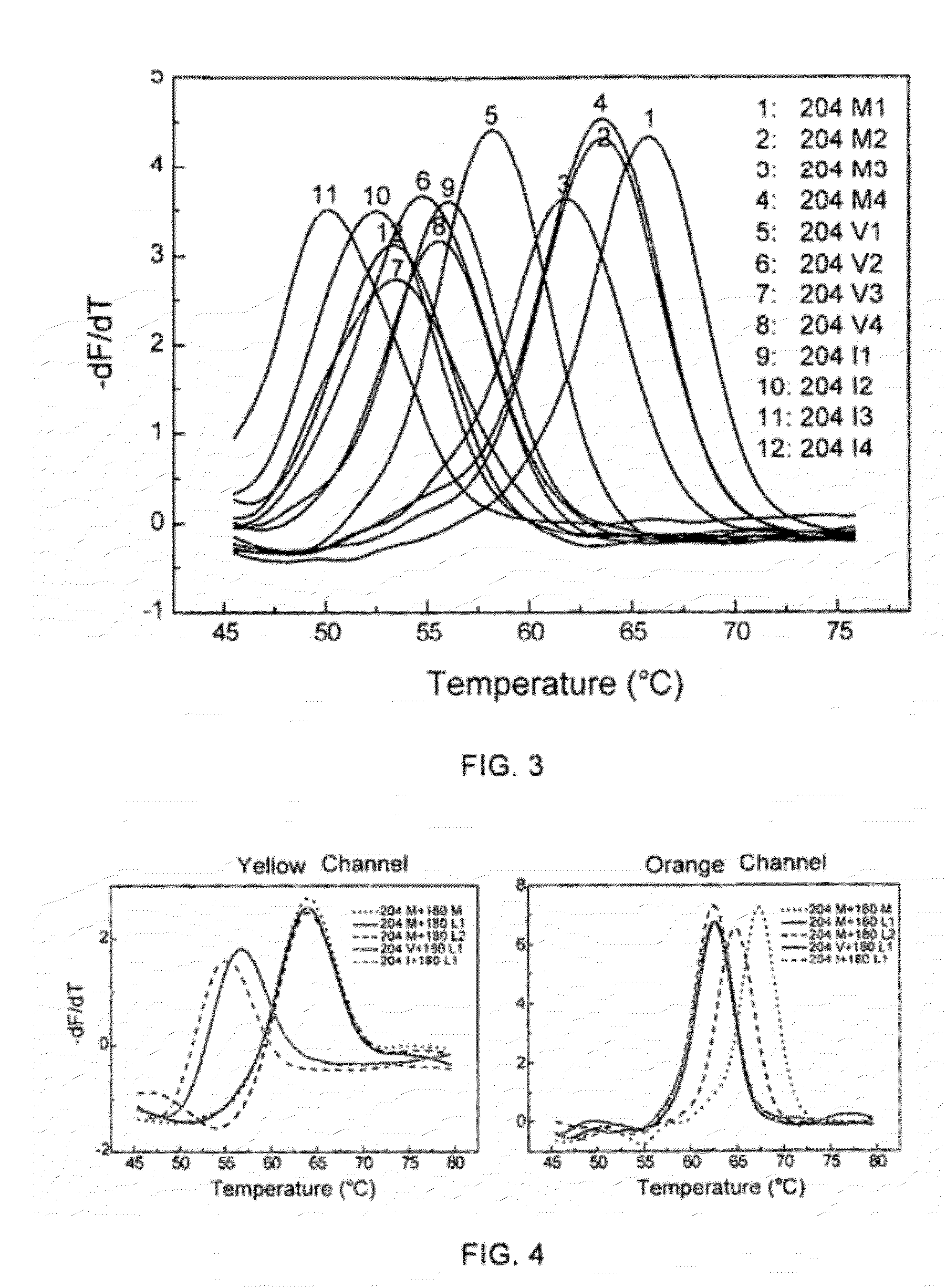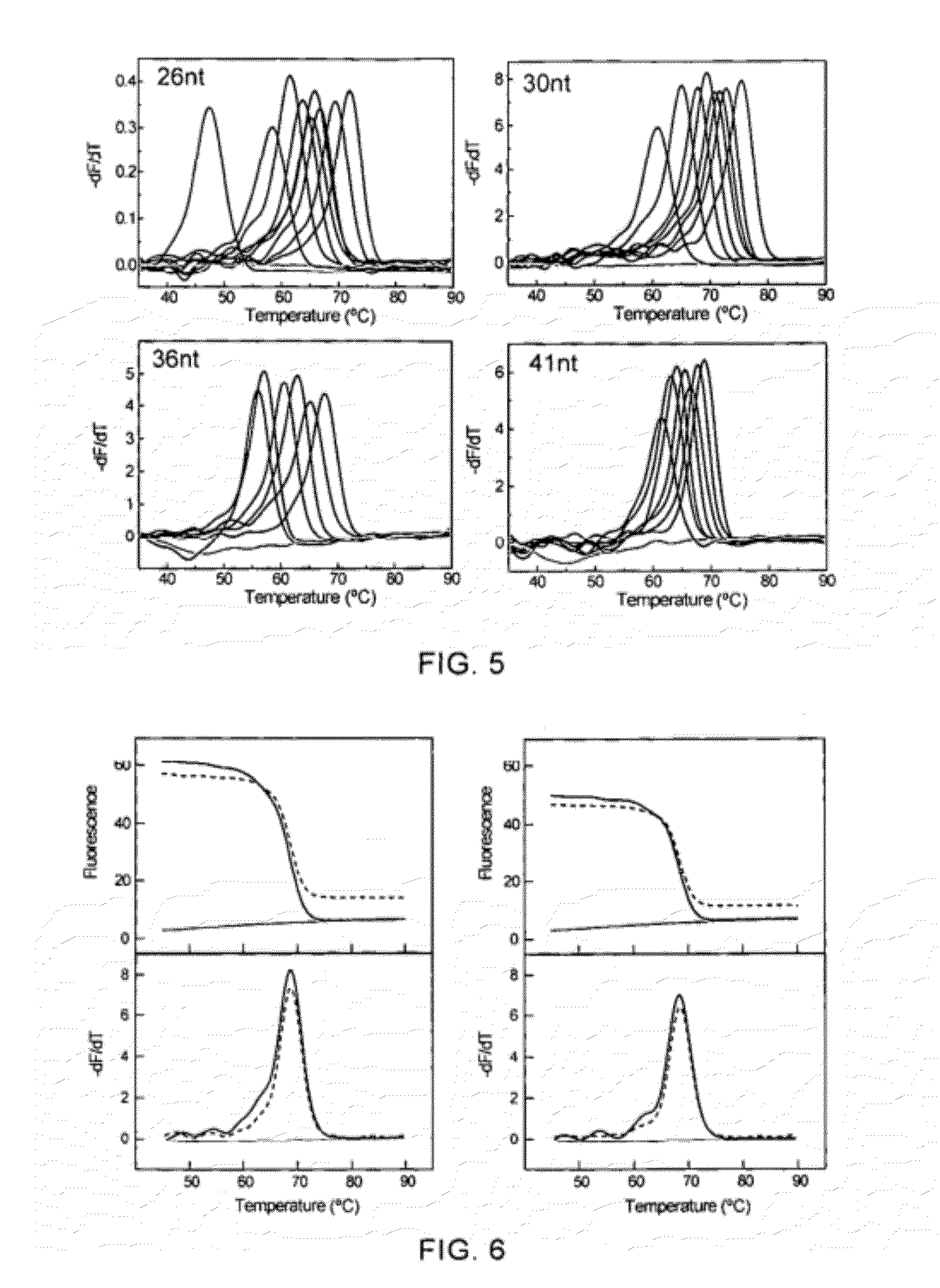Method for Detecting Variations in Nucleic Acid Sequences
a nucleic acid sequence and variation technology, applied in the field of nucleic acid sequence variation detection, can solve the problems of limited combinations of fluorescence donor and acceptor, difficult selection of conserved regions for anchor probes, and limited number of fluorescence channels that can be used for labeling detection of this format of labeling
- Summary
- Abstract
- Description
- Claims
- Application Information
AI Technical Summary
Benefits of technology
Problems solved by technology
Method used
Image
Examples
example 1
[0079]Artificially designing different complementary target nucleic acid sequences to examine the ability of using the method of linear self-quenched probe melting curve to detect nucleic acid sequence variations.
[0080]In this example, a self-quenched probe directed to the 5′ untranslated region of the α-globin gene was designed. By artificially synthesizing target nucleic acid sequences completely complementary to the probe or with a point mutation, the ability of the method of self-quenched probe melting curve in distinguishing different target nucleic acid sequences was examined. The self-quenched probe and the target nucleic acid sequences used are:
(SEQ ID NO: 1)Probe 1: 5′-FAM-CCTGGTGTTTGTTCCTTCCC-BHQ-3′,the linkage between the first and the secondbases in the 5′ end is a phosphorothioatedlinkage.(SEQ ID NO: 2)(SEQ ID NO: 3)
wherein, the underlined part of the target nucleic acid sequence is complementary to the probe, the boxed part of Target 2 indicates the mutated base, the t...
example 2
[0083]Detecting specimens of different genotypes using the method of linear self-quenched probe PCR-melting curve analysis.
[0084]In this example, a self-quenched probe directed to the 5′ untranslated region of the α-globin gene was designed (probe 1, see example 1). The α1-globin gene was distinguished from the α2-globin gene based on the differences of probe melting temperatures; human genomic DNA was used as the template, after real-time PCR amplification, melting curve analysis was performed for Probe 1, to illustrate that the method of self-quenched probe melting curve may be used for genotyping. The primers used were:
P1:(SEQ ID No: 4)5′-GCAAGCCCTCACGTAGCGAAGTAGAGGAGTCTGAATCTGGA-3′andP2:(SEQ ID No: 5)5′-GCAAGCCCTCACGTAGCGAATCCCTCTGGCGATAGTCA-3′.
[0085]The PCR reaction system was: in 25 μL reaction solution, there were 2.5 μL 10× PCR buffer (without Mg2+), 4.0 mM MgCl2, 5 pmol probe 1, 0.2 mM dNTP, 1 U Hotstart Taq DNA polymerase, 0.1 μM upstream primer P1, 1 μM downstream primer ...
example 3
[0087]The ability of the method of self-quenched probe melting curve with different artificially synthesized complementary sequences to detect nucleic acid sequence variations,
[0088]The codon at position 204 in the C region of the coding region of the DNA polymerase from hepatitis B virus was mutated from methionine (M) into valine (V) (ATG→ATT) or isoleucine (I) (ATG→GTG) will result in resistance to the first-line drug lamivudine, and may be accompanied by a mutation of the codon at position 180 from leucine (L) into methionine (M) (CTG / TTG→ATG).
[0089]In this example, a self-quenched probe covering the C region of the coding region of the DNA polymerase from hepatitis B virus was designed, and artificially synthesized target nucleic acid sequences were used to examine the ability of the method using LNA modified self-quenched probe melting curve to detect nucleic acid sequence variations. The self-quenched probes and the target nucleic acid sequences used were:
(SEQ ID No. 6)(SEQ I...
PUM
| Property | Measurement | Unit |
|---|---|---|
| melting temperature | aaaaa | aaaaa |
| temperature | aaaaa | aaaaa |
| temperature | aaaaa | aaaaa |
Abstract
Description
Claims
Application Information
 Login to View More
Login to View More - R&D
- Intellectual Property
- Life Sciences
- Materials
- Tech Scout
- Unparalleled Data Quality
- Higher Quality Content
- 60% Fewer Hallucinations
Browse by: Latest US Patents, China's latest patents, Technical Efficacy Thesaurus, Application Domain, Technology Topic, Popular Technical Reports.
© 2025 PatSnap. All rights reserved.Legal|Privacy policy|Modern Slavery Act Transparency Statement|Sitemap|About US| Contact US: help@patsnap.com



